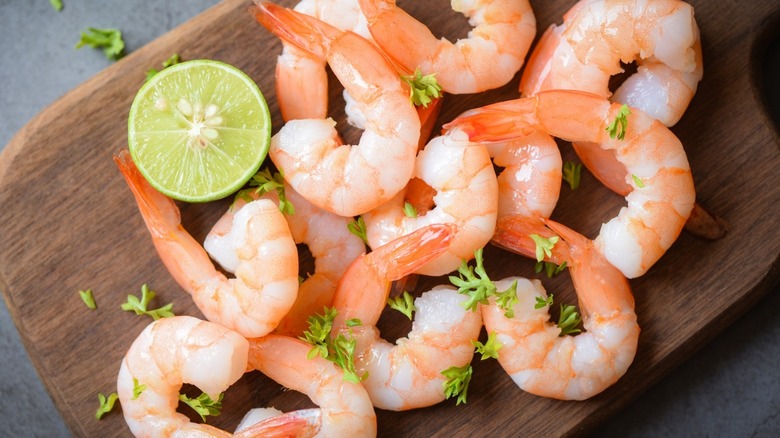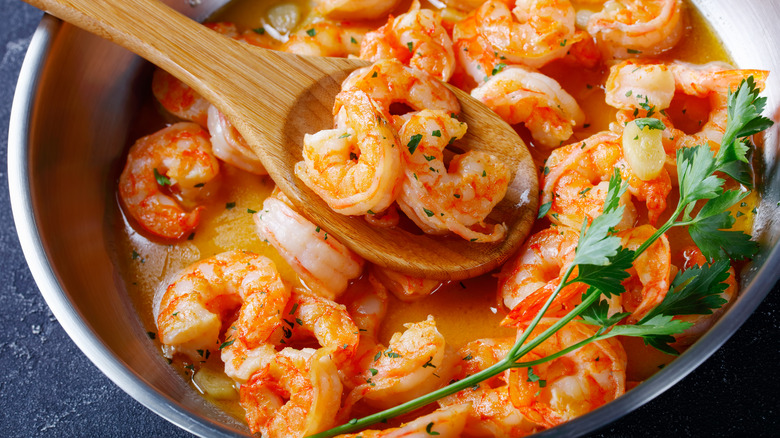Why You May Want To Avoid Eating Leftover Shrimp
It's always a better option to save leftover food versus throwing it in the trash. Each year, Feeding America reports that the United States produces 108 billion pounds of wasted food — which means saving it and reheating is the way to go. However, some foods reheat better than others.
Leftover seafood can be hit or miss. Reheating breaded fish in the oven, for example, might give them the same crisp they had when you first enjoyed them. On the other hand, more delicate seafood, such as scallops, might lose their melt-in-your-mouth texture if you tried to reheat them in the microwave.
When it comes to warming up leftovers, every dish needs different care. What might work for reheating pasta won't necessarily work for leftover steak. And when it comes to a more delicate dish, such as leftover shrimp, it can be hard to get that texture just right — which is why you might want to do your best to eat all of that shrimp in one sitting.
You might not want to eat leftover shrimp
If you're looking for a reheated dish that keeps its texture, you may want to avoid cooking too much shrimp. Though grilled shrimp is great when it's fresh off the heat, trying to keep that flavor and texture isn't easy when it comes to reheating.
Southern Living spoke to Chef Brad Stevens, who works for Dovetail in Macon, Georgia, and he suggested that shrimp are meant to be enjoyed right after they're prepared. According to the outlet, Stevens revealed that reheating shrimp creates a texture similar to rubber, which doesn't make them palatable enough to enjoy that second time around.
If you prepare too many shrimp and need to reheat some leftovers, Cooking Chew suggests reheating the shrimp in the oven or frying pan to keep that texture from turning rubbery. Though the microwave is an option for a quick reheat, if you do go that route, Cooking Chew says to cover the shrimp with either plastic wrap or a lid to keep the texture intact.

